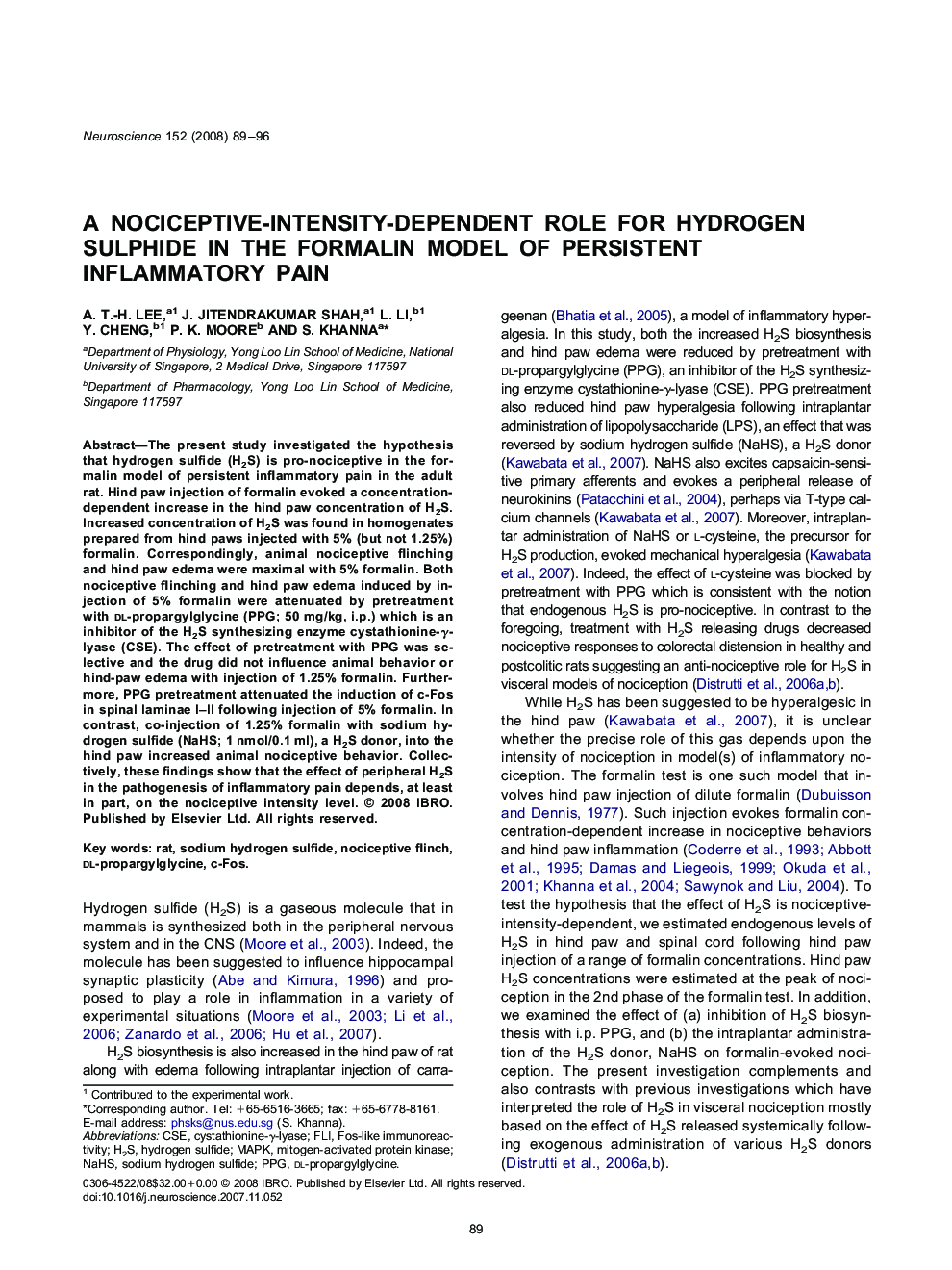| کد مقاله | کد نشریه | سال انتشار | مقاله انگلیسی | نسخه تمام متن |
|---|---|---|---|---|
| 4342182 | 1295859 | 2008 | 8 صفحه PDF | دانلود رایگان |

The present study investigated the hypothesis that hydrogen sulfide (H2S) is pro-nociceptive in the formalin model of persistent inflammatory pain in the adult rat. Hind paw injection of formalin evoked a concentration-dependent increase in the hind paw concentration of H2S. Increased concentration of H2S was found in homogenates prepared from hind paws injected with 5% (but not 1.25%) formalin. Correspondingly, animal nociceptive flinching and hind paw edema were maximal with 5% formalin. Both nociceptive flinching and hind paw edema induced by injection of 5% formalin were attenuated by pretreatment with dl-propargylglycine (PPG; 50 mg/kg, i.p.) which is an inhibitor of the H2S synthesizing enzyme cystathionine-γ-lyase (CSE). The effect of pretreatment with PPG was selective and the drug did not influence animal behavior or hind-paw edema with injection of 1.25% formalin. Furthermore, PPG pretreatment attenuated the induction of c-Fos in spinal laminae I–II following injection of 5% formalin. In contrast, co-injection of 1.25% formalin with sodium hydrogen sulfide (NaHS; 1 nmol/0.1 ml), a H2S donor, into the hind paw increased animal nociceptive behavior. Collectively, these findings show that the effect of peripheral H2S in the pathogenesis of inflammatory pain depends, at least in part, on the nociceptive intensity level.
Journal: Neuroscience - Volume 152, Issue 1, 3 March 2008, Pages 89–96